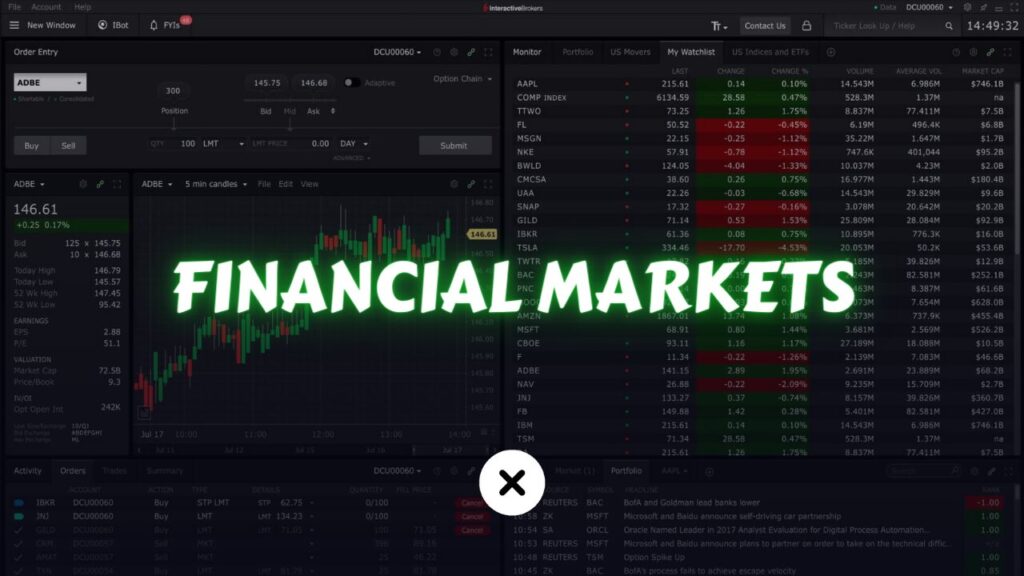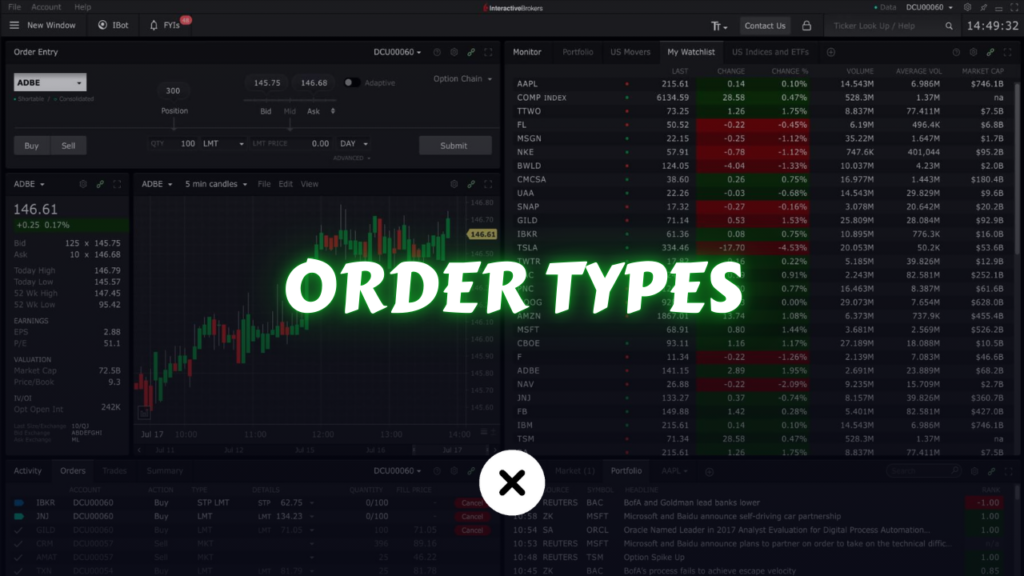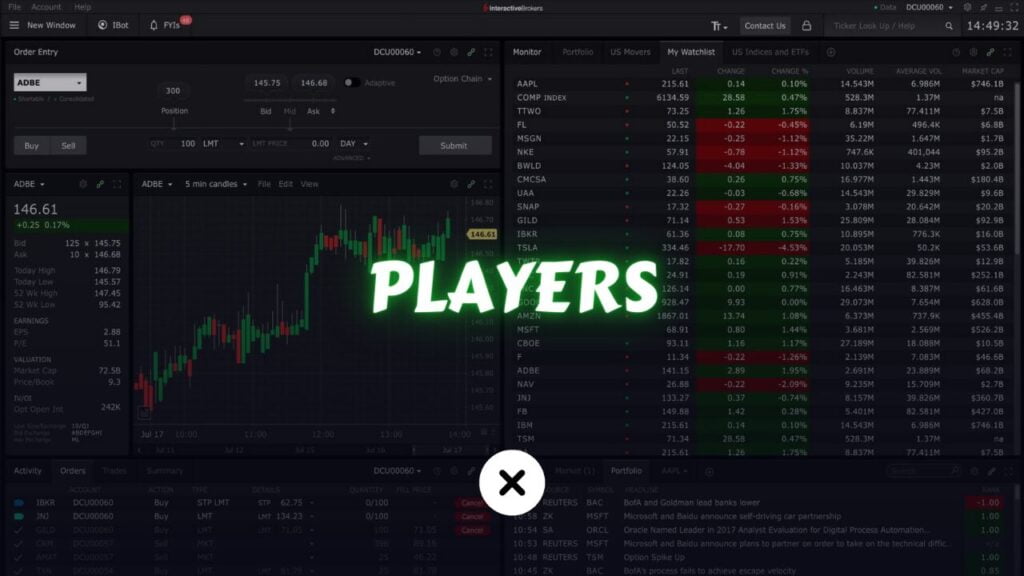Options trading can feel like a complex puzzle to newcomers. With so many moving parts—strike prices, expiration dates, implied volatility, the Greeks, and more—it’s easy to feel overwhelmed. But the right tools can simplify the process, helping you make more informed decisions and gain confidence as you enter the world of derivatives. In this comprehensive guide, we’ll break down some of the most essential options trading tools for beginners, including how they work, why you need them, and how to use them effectively.
Table of Contents
Introduction to Options Trading

What Are Options?
Options are financial derivatives that give buyers the right—but not the obligation—to buy or sell an underlying asset at a predetermined strike price before a specific expiration date. Unlike owning a stock outright, an option allows traders to control (or hedge) a larger amount of shares with relatively smaller capital. Options come primarily in two flavors: calls and puts.
- Call Options: Grant you the right to buy the underlying asset at the strike price.
- Put Options: Grant you the right to sell the underlying asset at the strike price.
Basic Terminology: Calls, Puts, and Premiums
Calls benefit when the underlying price moves upward, while puts gain value as the underlying price moves downward. The price you pay for an option is called the premium, and this cost is influenced by factors like time until expiration, volatility, and the underlying asset’s current market price.
Understanding these basics is essential before diving into the tools that can help you assess and manage these variables.
Why You Need the Right Tools
Avoiding Costly Mistakes
Beginners often approach options with limited understanding, risking miscalculations that could lead to sizable losses. Tools like options calculators and trackers help minimize guesswork, allowing you to make data-driven decisions based on probabilities rather than intuition.
Gaining Competitive Advantages
The right tools offer real-time data, insightful analytics, and the ability to simulate scenarios before putting real money on the line. This empowers you to identify high-probability trades, optimize entry and exit points, and manage risk more effectively. In a market where every second and cent matters, having the best tools at your disposal can significantly improve your chances of success.
Options Calculators: The Backbone of Analysis

What Is an Options Calculator?
An options calculator is a software tool or online platform that helps you determine the theoretical fair value of an option contract. By plugging in variables such as the underlying price, strike price, time to expiration, interest rates, and implied volatility, the calculator applies mathematical models—like the Black-Scholes model—to estimate what an option should be worth.
Key Inputs: Strike Price, Underlying Price, Implied Volatility, and More
- Strike Price: The predetermined price at which the option can be exercised.
- Underlying Price: The current market value of the asset you’re trading options on.
- Implied Volatility (IV): The market’s expectation of how much the underlying asset’s price will fluctuate.
- Time to Expiration: How many days or weeks until the option contract expires.
- Interest Rates & Dividends: These can also factor into pricing, especially for longer-dated options and equities that pay dividends.
How to Use Options Calculators to Estimate Fair Value
Imagine you’re considering a call option on a stock currently trading at $100, with a strike price of $105, 30 days until expiration, and an IV of 20%. Input these details into the calculator. The tool might suggest the fair value is around $2.50 per contract. If the market is selling that option for $2.00, you might see it as undervalued, potentially a good buy. Conversely, if it’s priced at $3.00, you might consider it too expensive.
Popular Online Options Calculators and Platforms
- Cboe (Chicago Board Options Exchange) Calculators: Free tools offering basic analytics.
- Brokerage-Provided Calculators: Many brokerages, like TD Ameritrade or E*TRADE, provide their own integrated calculators.
- Independent Financial Websites: Platforms like OptionsProfitCalculator.com let you simulate trades and see potential outcomes.
Volatility Tools and Implied Volatility (IV) Trackers

Understanding Volatility: Historical vs. Implied
Historical volatility measures how much an asset’s price has fluctuated in the past. Implied volatility, on the other hand, is a forward-looking measure. It reflects the market’s expectation of future volatility. IV is crucial because it heavily influences option prices—higher IV generally means more expensive options.
IV Trackers and Their Importance in Options Pricing
IV trackers show current and historical IV levels for different strike prices and expirations. By comparing an option’s IV to its historical range, you can gauge if it’s relatively cheap or expensive. This helps in deciding whether to buy or sell an option.
How to Compare IV Across Multiple Stocks or ETFs
Some tools allow you to input a watchlist of securities and compare their IV levels side-by-side. This can help you quickly identify which underlying assets might offer the best opportunities for your strategy, whether that’s premium selling or speculative buying.
Greeks Calculators and Simulators

What Are the Greeks?
The “Greeks” quantify how sensitive an option’s price is to various factors:
- Delta: How much the option price changes with a $1 change in the underlying.
- Gamma: How much Delta changes as the underlying moves.
- Theta: Time decay; how much an option loses in value each day if nothing else changes.
- Vega: Sensitivity to changes in implied volatility.
- Rho: Sensitivity to interest rate changes.
Using a Greeks Calculator to Understand Risk and Sensitivity
A Greeks calculator breaks down your option position into these components, helping you understand what could happen if the market moves against you. For instance, if you know your position has a Theta of -$10 per day, you understand that holding that position will cost you $10 in time decay daily.
Practical Examples of How Greeks Impact Your Trade
- Delta Example: If your call option’s Delta is 0.50, then a $1 increase in the underlying stock could raise your option’s value by about $0.50.
- Theta Example: If Theta is -0.05, then each day that passes without change in the underlying or IV will cost you $0.05 per share (or $5 per contract of 100 shares).
Options Chain Analysis Tools

Reading an Options Chain
An options chain lists all the available options for a particular underlying, organized by expiration date and strike price. It shows the bid/ask quotes, implied volatility, volume, and open interest. Beginners often find the chain intimidating, but it’s your main dashboard for finding opportunities.
Filtering and Sorting to Find Opportunities
Modern tools let you filter by criteria like implied volatility, probability of profit, or delta range. You can sort by highest volume, narrow down to strikes near the underlying price, or focus on certain expirations to find the options that fit your strategy.
Integrating Chain Data with Your Strategy
For example, if you’re looking for covered call opportunities, you might filter for 30-day calls with a Delta of around 0.30 and look for those providing a reasonable premium on a stock you already own. Tools that integrate chain data with calculators and Greeks analysis help streamline your entire process.
Profit & Loss (P/L) Diagram Tools

Understanding P/L Diagrams for Various Strategies
A profit & loss diagram visually represents how your trade’s outcome changes with the underlying asset’s price at expiration. From simple calls and puts to complex multi-leg strategies (like iron condors or butterflies), these diagrams show maximum potential profit, maximum loss, and breakeven points.
Visualizing Potential Outcomes Before Committing to a Trade
By modeling your trade in a P/L diagram tool, you see how it performs if the underlying goes up, down, or stays flat. This encourages better risk management and ensures you don’t commit to a strategy without understanding its sensitivities.
Tools That Help You Compare Different Option Strategies
Certain platforms allow you to compare multiple strategies side-by-side. For instance, you could line up a vertical call spread versus a diagonal spread to see which offers a better risk/reward profile for your outlook on the underlying.
Position Management and Portfolio Tracking Software

Tracking Multiple Positions Across Different Underlyings
As you grow as a trader, you may end up holding numerous positions across various stocks, ETFs, and indices. Using portfolio tracking software can help you monitor your exposure, P/L, and Greeks across all trades at once. This consolidated view prevents oversight and helps maintain a balanced portfolio.
Real-Time Updates on P/L and Greeks Across Your Portfolio
Modern trackers can update in real time, reflecting changes in the underlying’s price, implied volatility, and time decay. Having an up-to-date snapshot is crucial for making timely adjustments, such as rolling a position closer to expiration or closing a losing trade before it worsens.
Using Trade Journals for Continuous Improvement
Many portfolio management tools also integrate trade journals. By recording each trade’s rationale, outcome, and lessons learned, you create a feedback loop that helps you improve over time. Journals help identify patterns, such as consistently overpaying for premium or holding onto losers for too long.
News and Analysis Platforms

Staying Informed: Market News, Earnings Reports, and Analyst Ratings
Options prices are influenced not just by math and volatility, but also by market-moving news events. Earnings reports, mergers, and macroeconomic data can all cause dramatic shifts in implied volatility and underlying prices. Subscribing to reliable financial news feeds and using platforms that integrate news can help you anticipate volatility spikes.
Integrating Fundamentals with Your Options Decisions
While not always the primary driver behind short-term option trades, long-term strategies can benefit from knowing a company’s fundamentals. Tools like company financials, analyst ratings, and sector comparisons can guide you when choosing which underlying assets to trade options on.
Mobile Apps and On-the-Go Tools

Trading from Anywhere: Essential Mobile Platforms
Today’s traders aren’t chained to a desktop. Mobile trading apps offered by brokerages or third-party developers provide real-time quotes, charts, and options chains right in your pocket. This allows you to enter or exit positions promptly, even if you’re not at your main workstation.
Push Notifications and Alerts to Manage Risk
Set price alerts or IV alerts to notify you when an underlying reaches a certain level or when your trade hits a profit target. These mobile tools help you manage risk proactively, ensuring you don’t miss critical moments in a rapidly changing market.
Selecting the Right Brokerage Platforms

Commission Costs, Platform Features, and Customer Support
Not all brokerages are created equal, and for options traders, choosing the right one matters. Evaluate features like commission structures (some brokers offer commission-free trades), the range of analytics tools, execution speed, and the quality of customer service. The best brokerage for you might not be the cheapest but the one that offers the most robust set of tools aligned with your trading style.
Built-In Tools and Integrations for Options Traders
Some brokerages integrate all the essentials—calculators, IV ranks, Greeks calculators, P/L diagrams, and trade journaling—within their platform. Choosing a full-featured brokerage can simplify your workflow, making it easier to focus on strategy rather than juggling multiple third-party tools.
Practical Tips for Beginners

Start Simple with Basic Strategies
Before diving into advanced strategies like iron condors or ratio spreads, start with straightforward trades such as buying a single call or put. Use an options calculator to understand fair value and a Greeks tool to measure risk. Over time, layer in more complexity.
Leverage Free Trials and Demos Before Committing
Many advanced platforms and tools offer free trials. Take advantage of these to practice in a risk-free environment. This allows you to test a platform’s reliability, user interface, and data quality before you invest real money or commit to a subscription plan.
Continual Learning and Community Engagement
The options market is dynamic, and so is the technology that supports it. Stay updated by reading industry blogs, joining trading forums, following influencers on social media, and even taking online courses. Interacting with other traders can provide insights into which tools are worth exploring and how to get the most out of them.
Conclusion
Options trading might seem like navigating a maze, but the right tools turn that maze into a well-lit, clearly signposted path. From basic calculators and IV trackers to advanced Greeks simulators and P/L diagram tools, these technologies empower beginners to make informed decisions, manage risk, and refine their strategies.
By understanding what each tool does—calculators estimate fair value, IV trackers measure volatility, Greeks calculators quantify risk sensitivities, and portfolio trackers monitor performance—you gradually build a robust framework for decision-making. Coupled with informed brokerage choices, careful strategy selection, and consistent education, these tools can help transform a novice options trader into a confident, data-driven market participant.
Remember: The journey doesn’t end once you’ve mastered a handful of tools. Markets evolve, and so do the technologies that serve traders. Continual learning, experimentation, and adaptation remain key. Armed with the right tools and a willingness to grow, you’ll be well on your way to becoming a successful options trader.



